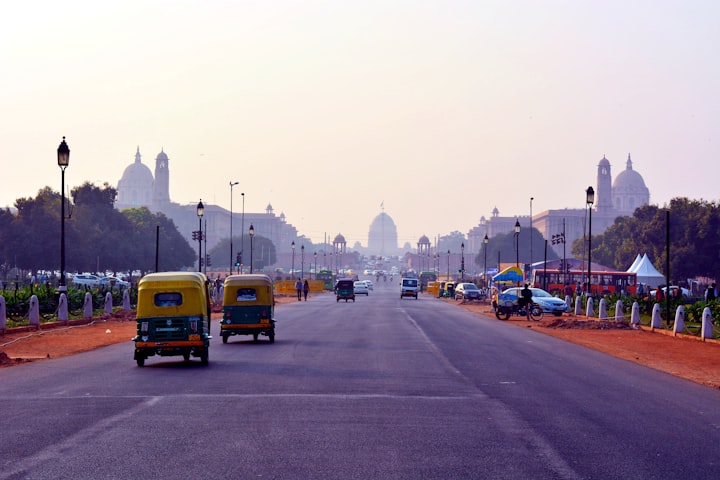Don’t Breathe - Delhi Edition
Let me start by apologizing for the lame Don’t Breathe reference in the title, but for real, if you are in Delhi, breathe with caution.

Year after year, Delhi’s air quality touches new lows (or highs) and this year has been no different. With the revival of economy and industrial activities in and around the city post lockdown, stubble burning season at its peak, and the awful Delhi traffic, the extremely subpar air quality indices were not so hard to predict. What was a shocker though, was the city administration’s decision to shut down schools, colleges and encourage work from home. Basically, an effort to minimize exposure to pollution, not by cutting down on pollution itself but by locking humans up in their houses. Apart from this, construction work has been halted, coal plants shut and non-essential trucks have been banned from entering the city.
Pollution in Delhi and several other Indian cities is no news. 9 out of the top 10 polluted cities in the world are situated in India. The situation is so bad that the AQI (Air Quality Index) in several Indian cities doesn't even meet India’s own ambient air quality standards, let alone the more conservative European and American standards. An estimate suggests that breathing Delhi’s air in November is equivalent to smoking 10 to 15 cigarettes every single day. Outdoor air pollution is one of the leading causes of premature deaths in India that kills millions of people every year. Not so surprisingly, the poor and the marginalized are exposed to this pollution significantly more than the privileged communities. We hear about these grim figures and read these articles every year and although a lot of us are desensitized to these numbers (just like our politicians), the fact remains that air pollution is harmful and needs to be controlled.
Now here’s the thing about air pollution - it is complex. It is complex because air pollution is not a function of pollutants alone but is also affected by weather, shape, size, composition, the concentration of pollutants, the time elapsed, surrounding geography, and several other factors. Did you know that (unscientifically) planting trees in urban areas can actually increase air pollution because they can release more volatile organic carbons that in turn lead to the generation of oxidants and secondary air pollutants? Did you know that the lockdowns induced by the pandemic actually deteriorated air quality in some urban centers because certain primary pollutants that serve as a sink for existing secondary pollutants were no longer available? Yeah, that’s how complex air pollution is!
Delhi is not the first city in the world to be facing extreme levels of air pollution. London in December 1952 witnessed the Great London Smog event that lasted for 4 days and led to the death of 10,000 people. This was due to the combined effect of excess coal use during the cold winter season and an anticyclone over the city that didn't allow the pollutants to disperse. This was a landmark event in air pollution science and policy and led to the UK Clean Air Act that helped the city crackdown on pollution. Since then, multiple cities across the world such as Beijing, Los Angeles, and Mexico City, among others have taken efforts to clean their air. Although not completely successful, these efforts have helped these cities combat pollution at least to the extent of keeping them habitable.
Air pollution is a problem that requires a multi-sectoral approach that includes government agencies, scientists and researchers, industries, and civilian society. The problem cannot be solved overnight or even over months or years. Cities like Beijing have taken decades to reduce pollution and will still require years before reaching ambient standards. Another key factor is consistency - bringing in a policy for a couple of weeks of peak pollution during winters would hardly create a dent in the pollution that has accumulated over decades. So while month-long schemes like the odd-even could reduce the pollution marginally, they are not a permanent fix to Delhi’s air pollution problem.
All in all, a myopic view of problem-solving can never combat something as serious and complex as air pollution. While it’s easy to lock up people in their houses and shut down schools and colleges, this in no way is addressing the bigger problem. The government should rather focus on advanced data collection, collaborate with scientists who understand the problem better, create better alternatives for civilians in terms of public transport facilities and crack down more aggressively on polluting industries. The typical approach towards air pollution in northern India has been to place the burden on farmers and stubble burning but the problem is much deeper. Senseless urbanization, lax industry norms, and stupid political blame games are some key issues that need to be worked upon. The longer this takes, the longer our capital shall suffer.
About the Creator
Rishi Rathi
Musing over sustainability and impact and ways to make the world better than we inherited. I'm learning while I write and I want your opinions on my stories.
Instagram - rishirathi_






Comments
There are no comments for this story
Be the first to respond and start the conversation.